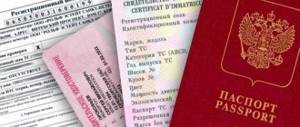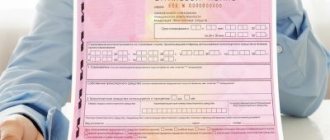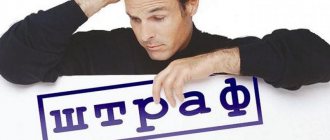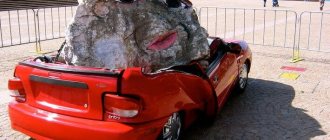Algorithm of actions in case of an accident
In order to achieve timely compensation for damage under the law, you need to act correctly in the event of an emergency, taking into account the circumstances that occurred.
The algorithm looks like this:
- stop the car immediately;
- turn on the alarm signals and display a special sign;
- if there are victims in critical condition, call an ambulance;
- in an emergency situation, victims are transported by passing transport;
- if a car completely blocks the road, it is moved to the side;
- it is necessary to report the accident to the traffic police;
- record contacts of witnesses and participants, vehicle numbers;
- wait for the arrival of the traffic police inspector;
- check the correctness of entering data into the protocol.
Advice! Before removing cars from the roadway, it is necessary to record their position in the presence of witnesses.
If the accident did not result in damage to health or loss of life, and the participants agreed on the main points, the problem can be resolved without the participation of an inspector. For this purpose, a European protocol is drawn up in an approved form, where the guilty and injured person is determined.
Who pays for the damage?
It is important to decide where to go for a victim after an accident. In accordance with Federal Law No. 40, in the event of an accident, the insurance company is obliged to compensate for damage to life, property and health. The following guarantees for payments to victims apply:
- 400 thousand rubles for compensation for damage to property;
- 500 thousand rubles to compensate for damage caused to life and health.
If the amount exceeds the established limit, compensation is paid at the expense of the culprit. Every driver should know that insurance is not provided for a limited amount. He can compensate it voluntarily. Failure to do so will result in a trial. If an accident occurs, direct compensation from the guilty participant is issued in the following cases:
- absence or invalidity of the MTPL insurance policy;
- the damage occurred when the innocent person’s car was not in motion;
- from three or more participants in the accident, and the amount of payments exceeds the limits;
- The victim demands compensation for moral damage.
So, if the guilty party has an Ingosstrakh policy, payments are made by the insurer after receiving the application. If moral damage is alleged, a personal appeal to the culprit is required. If a refund is refused, you must contact the judicial authority at the place of registration of the second participant.
Choosing an insurance company
First, it is determined whose insurance company the victim of an accident should contact. The ideal situation is when all participants have a valid MTPL policy. You can make an appointment with your insurer or with the insurance company of the guilty party. If the damage is significant and there is CASCO insurance from Alfastrakhovanie or another organization, part of the payments is made on it. The following factors are taken into account:
- degree and nature of damage;
- number of vehicles involved;
- circulation period;
- presence of casualties;
- valid insurance policy.
When should you contact the victim’s insurer?
It is important for the victim to clarify in advance which insurance company to contact in the event of an accident—your own or the culprit’s in 2021.
It is possible to apply to your organization, but it is important to meet a number of requirements. Compensation in a simple way is allowed if the amount of payments fits into the current limit and moral damage is not compensated.
The following set of documents is presented:
- notification of an accident;
- certificate of accident from the traffic police;
- documents from the traffic police confirming violation of the law;
- medical examination;
- Bank details;
- a notarized copy of the applicant’s passport;
- special power of attorney if the documents are submitted by a representative.
Advice! It is important to submit your claim within 5 days of the incident so that the insurer can complete a timely assessment. The review period is 30 days, after which a decision is made.
When should you contact the culprit’s insurer?
If the situation cannot be resolved by the terms of the organization of the injured party, you need to contact the company of the culprit. Among the most common reasons:
- accident involving at least 3 cars;
- An accident resulting in harm to life or health.
The application process is similar: you need to prepare a standard package of documents and submit your application in person. If the license is revoked or the insurer ceases to exist, you must contact the RSA.
If obligations are not fulfilled in whole or in part, an examination is carried out. Then documents are submitted to the court. Next, the judge decides on the possibility of recovery. To increase your chances of a positive outcome, it is important to describe the circumstances of the case and prepare the most detailed evidence base.
Mutual guilt
Such a legal concept is not enshrined in the legislation. But the term is widely used by insurance companies and ordinary inspectors when traffic violations occurred on the part of both drivers. As a result of this, an accident occurs, and everyone receives a decision.
If both participants in the accident are at fault, each is formally recognized as both guilty and injured. In fact, much is determined by the judge’s point of view. When it is difficult to establish whose actions were decisive, applications are submitted to the RSA.
When more than two cars are involved in an accident
Many drivers are interested in the question of which insurance company is better to contact - the culprit or their own in 2021, if several cars were involved in the accident. In this case, the standard rules are not used. Each participant can submit an application to the company of the culprit. If there are several such persons, you can choose one insurer. It is important to compose your application correctly so as not to face a refusal on formal grounds.
It is important to know! If it is impossible to establish specific fault, organizations pay damages in equal proportions. When several guilty parties are identified, compensation is made taking into account the extent of the damage and confessions.
When can I contact mine?
And paragraph 1 of Article 14.1 lists the following circumstances - all of them must be fulfilled within the framework of one insured event:
- as a result of the accident, only cars were damaged - that is, there was no harm to health or life, as well as to other property,
- 2 or more cars were involved in the incident - if only one of them was damaged, then you need to contact the insurance company at fault,
- these cars interacted with each other, that is, they collided and there was contact between them,
- all participants in the accident have valid MTPL policies.
Despite the fact that at each point we tried to explain the conditions for contacting your insurer, let’s take a closer look at them!
If the damage is caused only to cars
Everything is quite simple here. If only the vehicles themselves were damaged in the accident, then you can submit a claim for damages to your insurer.
This condition is not formally met, for example, if the mobile phone of one of the participants was damaged, even if you do not indicate this in the application for payment and do not present a claim for compensation (including if we are talking about the mobile phone of the culprit). But in practice, the insurance company will not find out in standard cases that the condition for applying for a PPV has not been met (unless the traffic police officers indicate this in the documents when registering the incident), therefore, if we are talking about the personal belongings of the culprit, then you can still contact your insurance company.
That is, the law does not say that the victim’s insurance company, when applying for a PPV, simply will not compensate for damage to personal belongings, but that in this case it does not pay compensation at all, and you need to contact the culprit’s insurer.
If there are injured or killed in an accident, then this is also a condition for contacting only the insurance company at fault. At the same time, again, it does not matter if the person at fault for the accident was injured - in any case, you need to go to his insurance company.
If 2 or more vehicles collide
Please note that there are 2 conditions hidden here:
- firstly, the accident involved 2 vehicles or more,
- secondly, they actually collided - that is, they touched each other.
For example, if one car cut off another, as a result of which the latter crashed into a bump stop or pole, and the first did not receive damage at all, and there was no interaction between the cars, then in case of such an accident it is necessary to contact the insurance company of the culprit.
If everyone has MTPL insurance
And finally, the last criterion is the presence of valid contracts for each of the participants in the accident. And this is quite logical.
- If the victim does not have insurance, how will he contact his insurance company?! After all, in this case there cannot be “one’s own”.
- If the culprit does not have a valid policy, then OSAGO does not work at all in this case. As we mentioned above, OSAGO is insurance against fault in an accident. In this situation, we demand compensation for damages directly from the culprit from his own pocket.
Another important point is expired insurance. This is the same as its absence. But we are talking here specifically about the period of insurance. Some car enthusiasts confuse this term with the “period of use of the vehicle.” The latter is an opportunity to insure cheaper for a car that is not used all year round.
The MTPL insurance period is always one year. And the period can be from 20 days to the same year. And, if the culprit has valid insurance, but the period of use of the car has expired, then his policy is still valid, and in this case, your insurance company will pay you for damages in an accident. Another thing is that the culprit will then suffer regression.
See, it's quite simple!
What to do if the culprit does not have insurance
Many people are concerned about which insurance company is best to contact in case of an accident when the other party does not have a policy. According to statistics, the obligation to purchase a car license is ignored by many car owners. In this situation, the degree of damage and the presence of victims is determined:
- If only the car was damaged, you need to contact RSA.
- If there is damage to health or life, legal proceedings are used.
In these cases, you do not need to go to your own insurance company. The only circumstance when this is possible, for example, is the presence of a CASCO policy. Its insurer will pay the due amount to the client, and then file a claim against the culprit.
Based on the results of the analyzed information, it becomes clear which insurance company to contact in case of an accident - your own or the culprit's in 2021. In fact, much is determined by the circumstances, characteristics and extent of the harm caused.
Where to apply for payment under OSAGO?
By law since 2009 You now have a choice: you can contact either the insurance company that insures your civil liability (direct settlement) or the insurance company of the person at fault for the accident.
It’s worth clarifying right away that you can not submit an application to your insurance company in all cases, but only if:
- damage was caused only to property;
- two vehicles were involved in the accident;
- The owners of both cars have a valid (at the time of the accident) OSAGO policy.
It is better to go to the insurance company of the culprit, since the last word in determining the cost of restoration work, in any case, remains with it. When contacting your company, you do not always have the opportunity to receive payments with absolute certainty.









